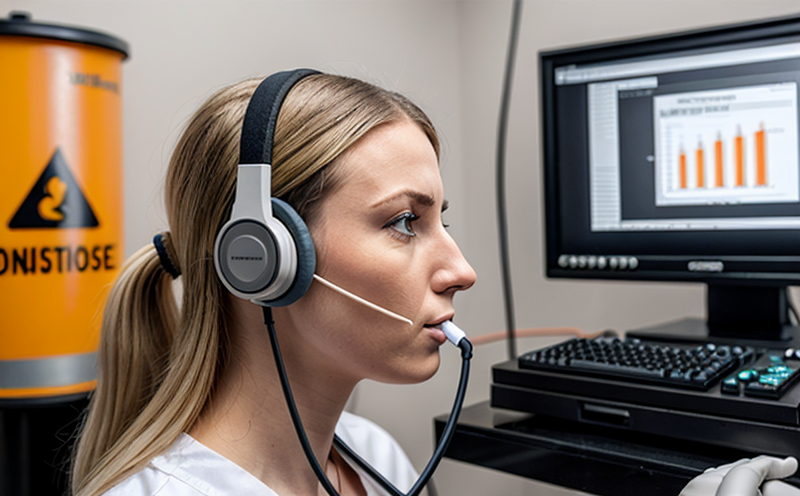ISO 11202 Noise Exposure Testing at Operator Positions
The ISO 11202 noise exposure testing standard is a critical tool in occupational health and safety. This service ensures that workers operating in noisy environments are not exposed to hazardous levels of sound, which can lead to hearing impairment or other adverse effects on their well-being.
Occupational noise exposure has been recognized as a significant global health concern by the World Health Organization (WHO), with studies indicating that prolonged exposure to high decibel levels can cause irreversible damage. ISO 11202 provides a framework for assessing and managing these risks, ensuring compliance with international standards and best practices.
Our laboratory specializes in conducting this testing at operator positions, which involves precise measurement techniques to evaluate the sound environment experienced by workers during their tasks. This includes not only the direct noise from machines but also reflections and other ambient sounds that can accumulate and affect the overall exposure level.
The process typically begins with a comprehensive site survey to identify potential sources of noise. Using state-of-the-art equipment, we measure sound levels at various points around the operator's position, ensuring all relevant factors are captured accurately. Once collected, data undergoes rigorous analysis to determine compliance with specified limits as outlined in ISO 11202.
For accurate results, it’s essential that the testing methodology adheres strictly to international guidelines. This process involves several key steps:
- Placement of sound level meters at operator positions
- Measurement over representative work periods
- Consideration of background noise and reverberations
- Evaluation against recommended exposure limits
The outcome provides valuable insights into the effectiveness of existing control measures or potential areas for improvement. By adhering to this stringent procedure, organizations can take proactive steps towards enhancing worker safety and maintaining regulatory compliance.
Moreover, ISO 11202 testing plays a crucial role in supporting the development of effective hearing protection devices (HPDs). Understanding the specific noise environment allows manufacturers to design HPDs tailored precisely for use at operator positions. This ensures that workers receive appropriate protection against excessive noise without compromising on comfort or functionality.
Our comprehensive approach goes beyond mere compliance; it focuses on providing actionable recommendations based on empirical evidence derived from our testing procedures. These suggestions can help employers implement targeted interventions aimed at reducing overall noise exposure, thereby promoting a healthier and safer work environment for all employees involved.
Why It Matters
The importance of ISO 11202 noise exposure testing cannot be overstated. Prolonged exposure to excessive noise levels can have severe consequences, including hearing loss, stress, and reduced productivity. In many industries where noisy machinery is common, such as manufacturing, construction, and mining, protecting workers from these hazards becomes paramount.
Employers who neglect proper noise management risk not only violating health and safety regulations but also facing reputational damage and increased operational costs due to absenteeism or medical claims. Compliance with ISO 11202 demonstrates a commitment to employee welfare and long-term business sustainability.
In addition, organizations that excel in managing occupational noise exposure can gain competitive advantages by creating safer workplaces, improving staff morale, and fostering innovation through uninterrupted concentration and communication among team members.
Applied Standards
The ISO 11202 standard is part of a broader series addressing various aspects of noise control in occupational settings. It specifically focuses on the measurement and evaluation of sound exposure levels at operator positions, providing guidelines for both new installations and existing facilities.
Key features include:
- Detailed instructions for placing sound level meters
- Protocols for measuring noise during typical working hours
- Criteria for calculating equivalent continuous A-weighted sound levels (Leq)
- Instructions on how to account for personal protective equipment (PPE) usage
This standard is widely recognized and adopted across numerous sectors, including manufacturing, mining, construction, and transportation. Its applicability extends beyond industrial environments into smaller businesses where noise levels may pose risks if not adequately controlled.
International Acceptance and Recognition
- Australia: Australian Standards align closely with ISO, making compliance straightforward for local operations.
- New Zealand: The country's regulatory framework mirrors international standards, ensuring seamless integration of ISO 11202.
- European Union: Member states often adopt ISO guidelines directly into national laws and regulations.
- United States: While not mandatory, many American companies voluntarily adhere to ISO standards for consistency and quality assurance.





